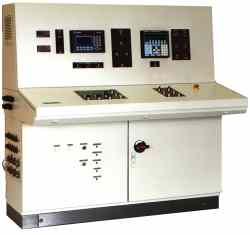 Micromech Systems builds Motion Control systems to customers specifications, ranging from simple single axis applications to complex multi-axis systems.
Micromech Systems builds Motion Control systems to customers specifications, ranging from simple single axis applications to complex multi-axis systems.
We will design, build test, produce application software, install and commission providing a cost-effective trouble-free solution to your Motion Control problems.
Whether the application is a machine upgrade or a new project, Micromech Systems have the answer.
Application Example 1
4 axis control system for motor slot insulation machine.
A recent example is a 4 axis version providing rotary indexing, material feed to length, knife position control & loader/unloader control.
The system is fully programmable, extremely user friendly and requires minimum set-up time.
Parker brushless servo drive and Baldor servo controller operator panel were used in the system.
Application Example 2
3-Axis Servo Control System for a Screen-Wrapping machine Increases accuracy and reduces Set-up time.
The screen-wrapping machine makes a welded wire-mesh cylinder, up to 40 feet long and 12 inches in diameter, with a variable pitch between the wound wires.
The screens consist of a series of perpendicular wires, around which a long spiral of wire is wound, and welded to. The screens form part of the pipe used for filtering dirt particles out of crude oil as it is extracted from the oil field.
The machine comprises three servo controlled axes :
Whilst a screen is being wrapped, the operator can adjust the gap between the wires, and the speed of the machine. There is also the facility for a vision system to interface with the controller, to compensate for deviations in wire thickness, and gap size.
Different wire dimensions, welder programs, and screen lengths and diameters can be entered by the operator and saved to memory, which can then be called up again at a later date, allowing for minimal machine set-up time.
Prior to the machine running, the length of wire required to produce the programmed dimensions is computed, and this is checked against a load cell on the reel of wire feeding the machine, to ensure there is sufficient wire to complete the job.
The control system is based around an Allen Bradley '1394' integrated multi-axis servo drive and controller, and a PanelView operator panel.